AMD Kaveri Review: A8-7600 and A10-7850K Tested
by Ian Cutress & Rahul Garg on January 14, 2014 8:00 AM ESTDrawing Performance Conclusions
As I progressed through the testing for this review, I became aware of trends in two things: absolute performance, in terms of numbers, and generational improvements across platforms. With AMD moving the Bulldozer based architectures from Piledriver in Trinity and Richland to Steamroller in Kaveri, the base CPU design has had a relatively long run in order to be optimized to the limitations on the CPU side. Obviously AMD has also had a chance to change the lithography node in there as well, and as such has optimized for design rather than performance. This matters a great deal when we look at the power banding (45W, 65W, 95W) and performance in each segment.
In order to display just how much Kaveri has grown in relation to the previous generations, I processed our mountain of data to show graphs where percentage gain against the older generations really does matter. As mentioned previously in this review, it all depends on whether the software can take advantage of the new features afforded by the architecture. In this review we have spent a lot of time discussing advantages for Kaveri in terms of compute (HSA, hUMA, hQ) and gaming (Mantle, TrueAudio), but some of these are still a little way off for software integration. So what does that translate to if you are looking for an APU today – does Kaveri still expand its wings with the integration of the GCN architecture, or does it lag behind due to the lithography node no longer being optimized for frequency. The proof is in the results.
IGP Gaming, 1280x1024
For the 100W APUs at 1280x1024, there is almost no movement between the Richland and the Kaveri APUs, except for Company of Heroes which would seem to leverage the extra SPs more than the MHz available.
45W APUs are clearly in vogue at 1280x1024, each of them providing a good bump over Richland.
IGP Gaming, 1680x1050
1680x1050 sees more benefit for the 100W APUs, but the 45W APUs still show big leaps.
IGP Gaming, 1920x1080
At 1080p the effects are more pronounced all around.
CPU Timed Benchmarks
Unfortunately the CPU timed benchmarks at 100W are bit over the place. Here we are dealing with an IPC gain but MHz deficit, and each benchmark has a different way of dealing with it. For Agisoft, MHz wins, but for Xilisoft, the Kaveri improvements work out well for the system.
At 45W the situation is a lot more clearer, and the newer APUs have the advantage, especially in Adobe After Effects.
CPU Score Benchmarks
45W still makes the biggest jump when it comes to score based CPU benchmarks.
IGP Synthetics
I never like putting much thought into the synthetic results – here both the 100W and the 45W range are showing good improvements all around. 3DMark 06 has the most trouble getting improvements as it relies more on the grunt, rather than the features that Kaveri affords.
IGP Compute
Off the bat we can see just how much of a difference the Kaveri GPU Compute can make over previous APUs. This is still without hUMA fully being in effect while we wait for a proper driver and software stack to become available.
Up to a +222% boost from Kaveri is amazing for a 45W part.
AMD vs Intel
For a little tete-a-tete, putting the 65W Iris Pro up against the 65W Kaveri seems like a good idea. To add to the mix, due to the extreme price difference of Iris Pro in this equation, we also add the 95 W Kaveri for comparison.
It is interesting to note that at the lower resolutions the Iris Pro wins on most benchmarks, but when the resolution and complexity is turned up, especially in Sleeping Dogs, the Kaveri APUs are in the lead.


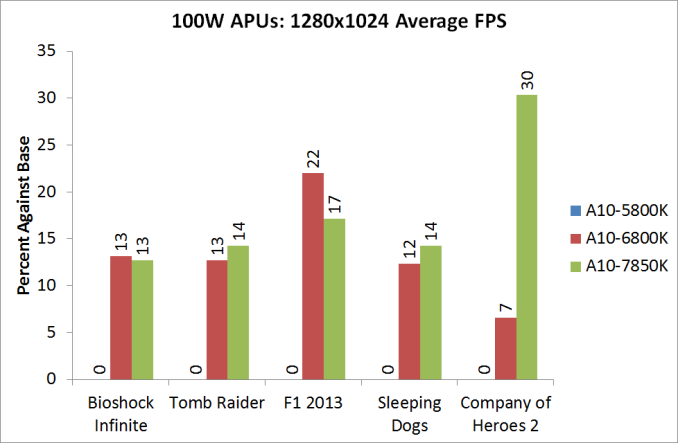
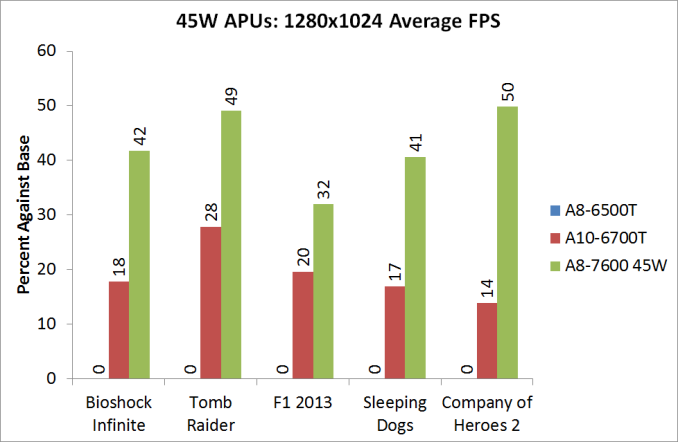
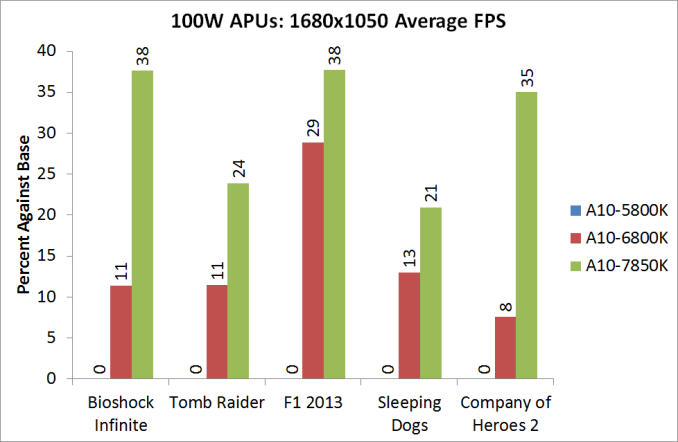
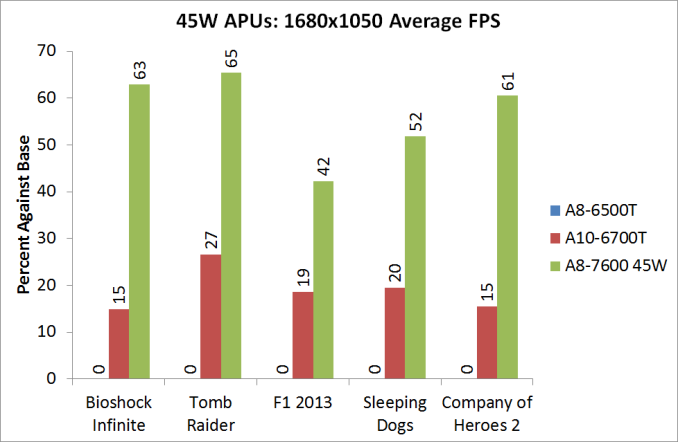
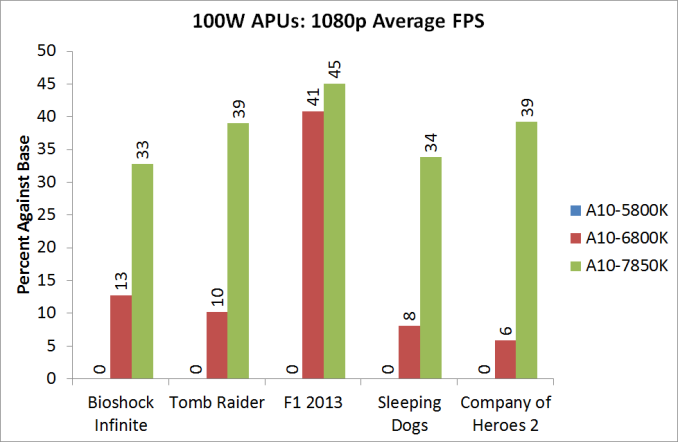

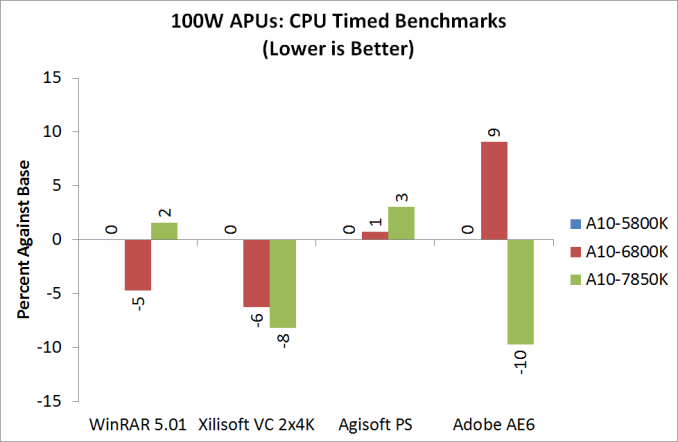
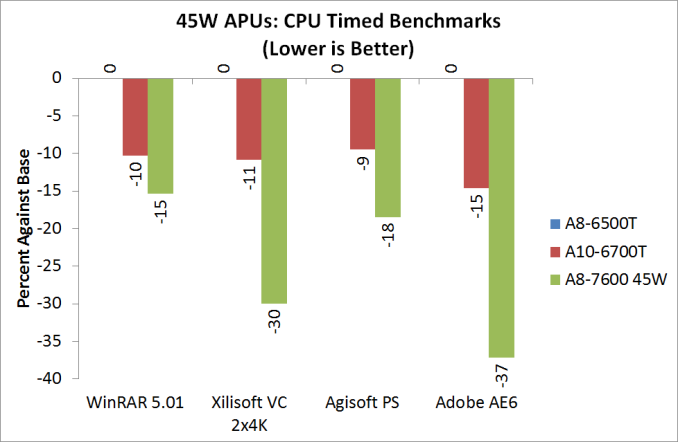

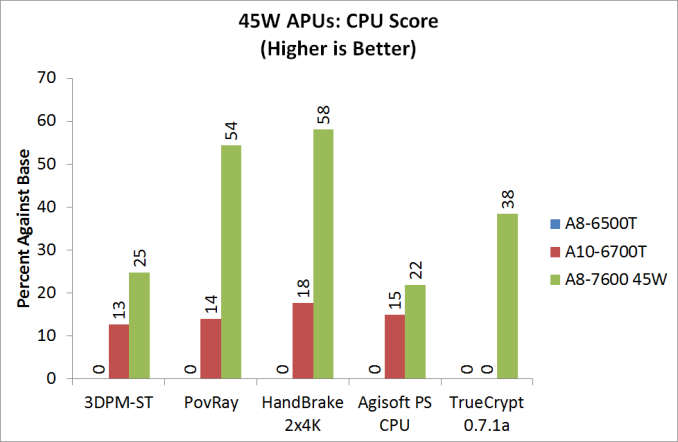
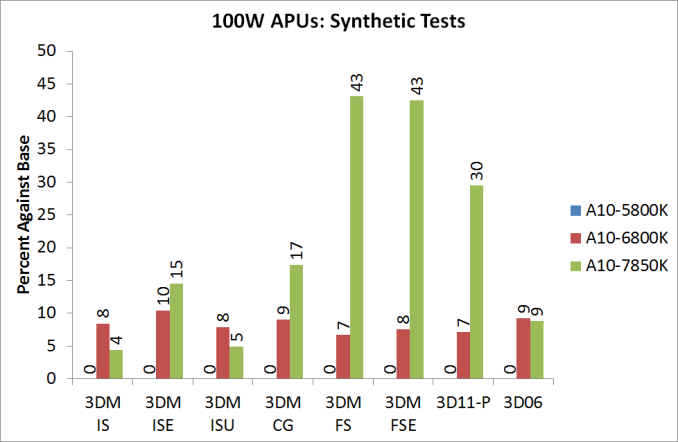
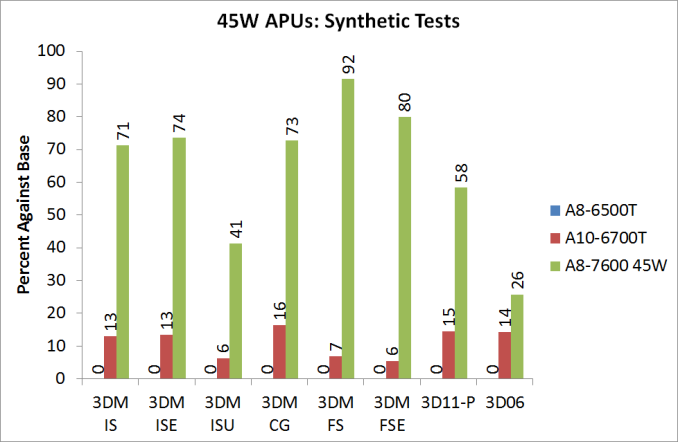
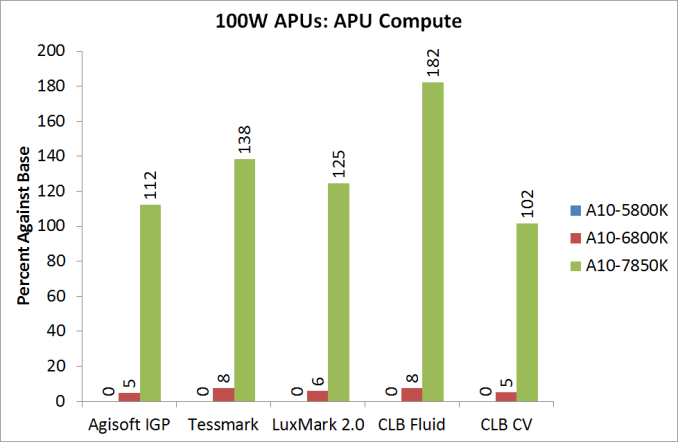

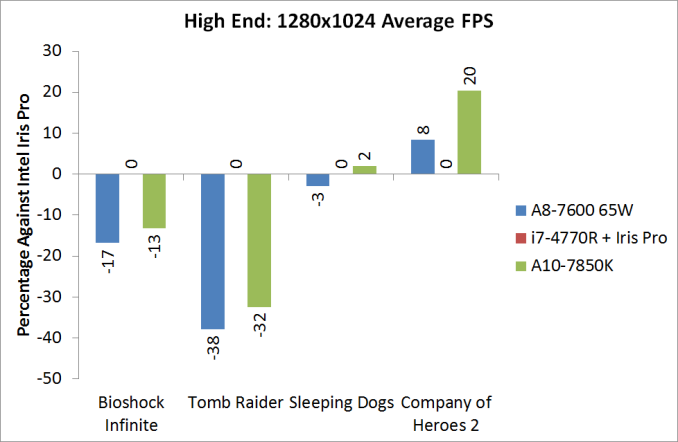
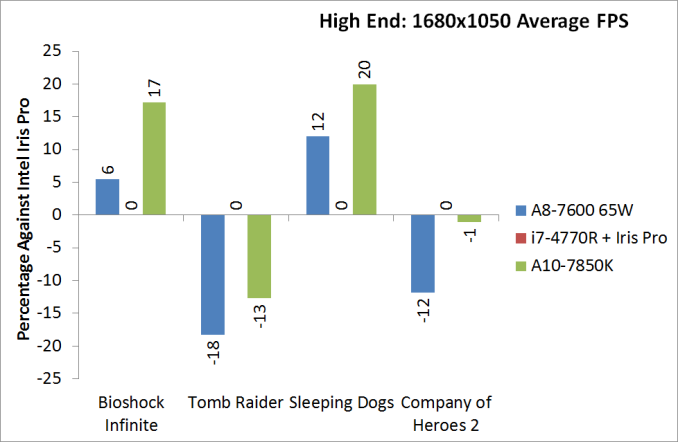
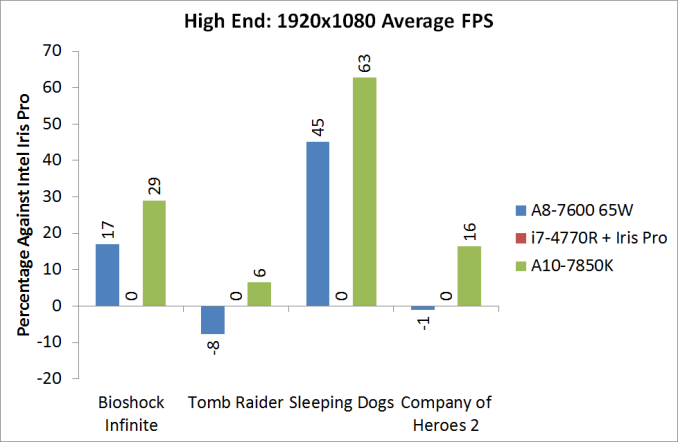








380 Comments
View All Comments
DryAir - Tuesday, January 14, 2014 - link
So at playble settings (30 fps+) kaveri is no better than richland. And both get outperformed by Iris Pro.jeffkibuule - Tuesday, January 14, 2014 - link
That CPU with Iris Pro costs $450 compared to these AMD chips which are far less expensive.takeship - Tuesday, January 14, 2014 - link
Only if you spring for the i7 variant. The i5 variant is ~300$. Still a premium over Kaveri, but you're also getting nearly double the CPU power.mr_tawan - Tuesday, January 14, 2014 - link
Also Iris comes only with R-variant of i5/i7. It won't run on your mainboard, so forget about DIY machine. You can always get a dGPU for that kind of machine though.just4U - Tuesday, January 14, 2014 - link
Is that why you can't buy the R variant at the usual places? I wasn't even aware that they are not compatible with regular 1150 boards.. hmmm.. that's to bad. I just thought they were in low supply or going to OEMs before they hit the retail channels.Gigaplex - Wednesday, January 15, 2014 - link
I'm pretty sure they only come in soldered-on variants.Klimax - Friday, January 17, 2014 - link
Correct, however some rumors say, that it won't be case with Broadwell/Haswell-refresh anymore. (Depends who is correct)thevoiceofreason - Tuesday, January 14, 2014 - link
Precisely. All those percentage improvement at 1080p graphs look very nice but are in the end moot if you realize you are looking at 12fps.At the end of the day, you can barely play at 720p.
methebest - Tuesday, January 14, 2014 - link
he needed to test them on low settings at 1080p.Principle - Tuesday, January 14, 2014 - link
Thats because they dont do these APUs any justice with their review strategy. They basically want to push GPUs, so they do not highlight the APU's actual capabilities. For example, how about some qualitative subjective analysis, rather than all of this easily comparative quantitative nonsense. I want to know at 1080p, what settings have to be turned down to be playable. Why in the world would they run these at Extreme settings??? Its absurd, unless you're trying to sell dGPUs. Where the AMD solutions really have an advantage is in the details. You likely can turn off AA and see the AMD FPS double, without nearly as big of jump by the Intel IGP where you would likely have to turn everything off or on low.